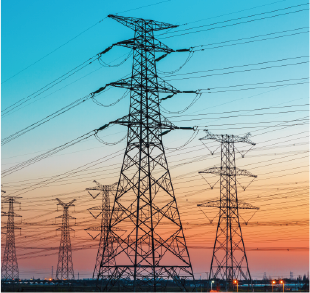Source: FusionCube super-converged infrastructure 2024 special issue

from a lamp coming home from work to the mobile network at home, to the production line of the factory and the emergency room of the hospital, reliable power supply is indispensable. In modern society, power transmission plays a vital role, and DC converter station, as the key hub of power transmission in our country, is an important node to ensure the safety of power transmission. In the process of digital transformation of thousands of industries, how to empower the stability and safety of DC converter stations with innovative technologies has become an urgent problem to be solved.
New national data typical Cases of the center
during the "14th Five-Year Plan" period, the State Grid Company accelerated the digital transformation, aiming to build a new generation of lean management system for equipment assets and empower the digital transformation of DC equipment management. In the Shaoxing converter station project, the State Grid and Huawei jointly built the digital converter station with the FusionCube Kunpeng super integration solution. This project will alleviate the contradiction between power supply and demand in Zhejiang, it is of great significance to ensure the safe and reliable power supply of East China power grid, and it has been successfully selected as a typical case of the 2022 national new data center certified by the Ministry of Industry and Information Technology.
Shaoxing converter station is the receiving station of Lingzhou-Shaoxing ± 800kV UHVDC transmission project, and it is an important part of the main artery of "West power transmission to East. There are more than 20 independent and unrelated systems running in parallel in the traditional converter station, which generate a large amount of real-time and non-real-time data every day. These data are of large scale, various types, the features of low value density and fast-changing big data require digital transformation and upgrading to improve work efficiency.
Complex O & M tasks and blind spots in device status awareness
the converter station has a large scale and a large number of devices. More than 20 independent systems lead to information dispersion, which brings a large burden to the operation and maintenance personnel. Online monitoring means are mainly traditional equipment online monitoring devices, with limited monitoring range, and problems such as insufficient sampling of equipment status characteristics, single technical means, etc. At the same time, the effectiveness of perceived data is insufficient, and the sampling interval of some data is long, which cannot meet the needs of real-time comparative analysis.
Lack of intelligent means and complex fault diagnosis
the converter station has a large number of devices and a large amount of data. It mainly relies on manual transcription and experience to analyze the status of the devices. The intelligent diagnostic methods of the devices are insufficient, and the intelligent analysis, diagnosis and early warning capabilities are lacking. In addition, the DC operation mode is flexible and the fault form is complex, which requires comprehensive information to complete the fault analysis. However, the remote converter station has weak technical strength and cannot meet the requirements of remote support and emergency response.
Data is not integrated, forming a "data Island"
because the devices come from multiple vendors and the control systems run independently in parallel, a large amount of real-time and non-real-time data is stored in multiple systems in different formats, forming a closed "data Island", these data cannot be integrated, integrated, and deeply mined, which limits the improvement of the operational reliability of converter stations.


 Reprint
Reprint